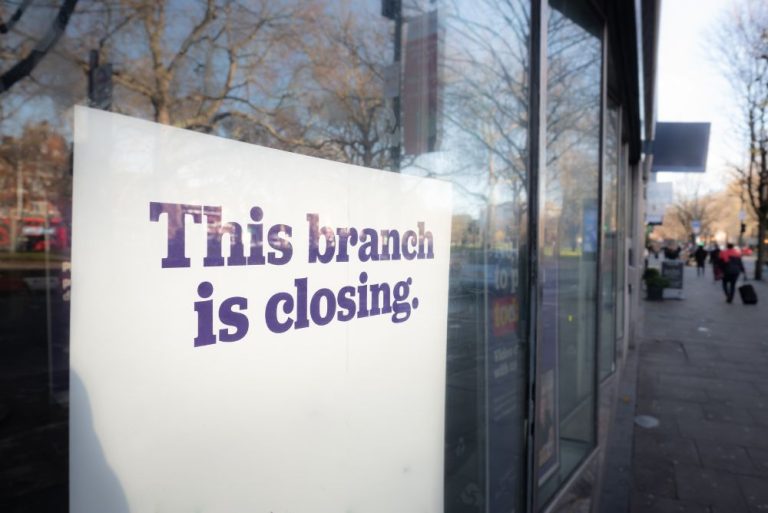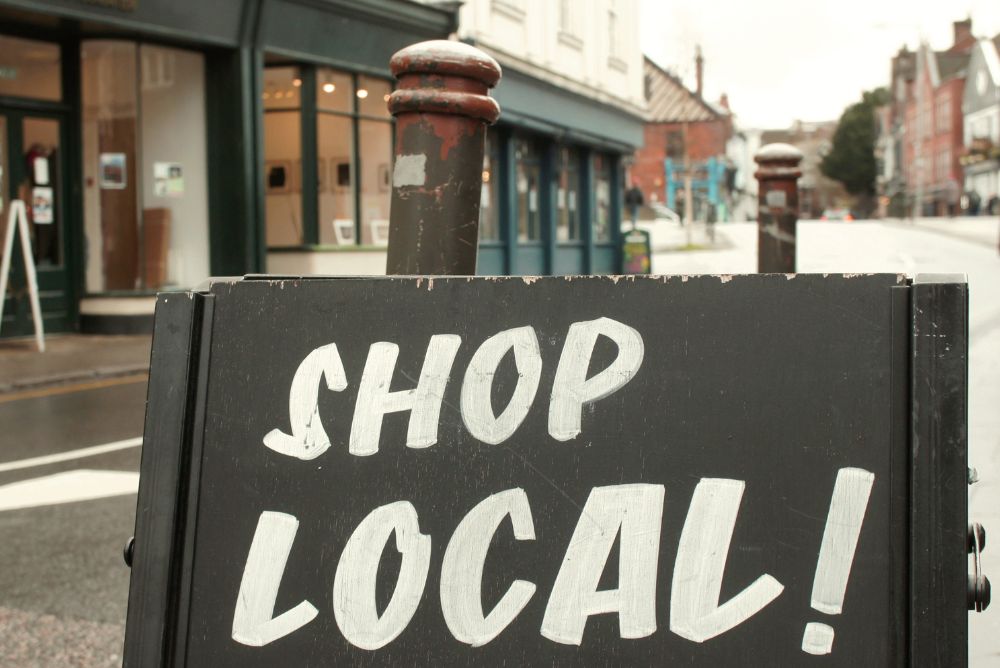Has your local bank branch closed? If it has, you’re not alone. A staggering 6,266 branches have shut since January 2015: 63% of the branches that were open since that time. That’s around 53 branches closing each month.
The NatWest Group (including NatWest, Royal Bank of Scotland, and Ulster Bank) has closed 1,431 branches – more than any other banking group. Lloyds Banking Group, comprised of Lloyds Bank, Halifax, and Bank of Scotland, has axed 1,285 sites. And Barclays has shut down 1,235 branches, the most of any individual bank.
Banks have been a staple on the British high street for decades. So why are the branches disappearing in front of our eyes? And how many more are scheduled to go?
Are there more bank closures planned?
Unsurprisingly, yes. More headlines came on this front, when Natwest announced the closure of 53 branches, starting from this year. But that’s not the only bank – Halifax is set to shut 99 branches in 2025, 92 Lloyds branches will go, and 24 from Bank of Scotland. TSB will close eight and Barclays will also lose six branches.
And it doesn’t stop there. Lloyds has scheduled 14 branch closures in 2026, while Halifax and Bank of Scotland will each shut four.
Why are so many bank branches closing?
Not enough people visit the branch
Many banks point to reduced branch visits, in favour of online and mobile banking, to justify their branch closures. Around 72% of UK adults used online banking and over half used mobile banking in 2020. Meanwhile, in 2017, the average bank branch received 104 visits a day, compared with 140 in 2012 (when the latest data is available to). It’s a fall of 26%.
But, saying that, it is only a fall of 26% fewer people visiting a branch versus half of all branches closing. Could this be more to do with reducing overheads than responding to customer needs?
It’s clear that plenty of people still use local banks for personal and business use. Not everyone can get on with digital banking, and it’s a particular challenge in rural areas, where there’s poor broadband and mobile coverage. Having enjoyed the presence of our Howden branches in many communities across the UK, it’s clear that there is still very much a need for that in-person, human contact, especially when it comes to sorting out your finances.

We think our CEO Kelly Ogley said it best: “Frankly, there’s no substitute for talking to an advisor face-to-face. It’s not just about getting the moral support that comes from human contact, but also in providing tailored advice that is a result of taking the time to listen to a customer’s concerns.”
So, does this mean you’ll be forced into online banking?
Strong protections are being introduced to ensure people aren’t forced into digital banking. The Financial Services and Markets Bill aims to strengthen the UK’s financial services while ensuring easy cash access.
Major banks—including Barclays, HSBC, Lloyds, and NatWest—are voluntarily funding shared banking hubs. Since 2022, these banks notify Link before closing branches so communities can request a hub. However, as of September 2024, only 76 of 162 recommended hubs have opened.
Banks are also adopting community-based solutions. Barclays’ ‘Barclays Local’ offers in-person support in town halls and libraries, while NatWest’s ‘Community Bankers’ meet customers in public spaces. Additionally, Post Office branches provide fee-free banking for major providers, allowing deposits, withdrawals, and balance checks.
Kelly continued: “Banks that close branches often say it’s because of a lack of local need but, if this were true, we wouldn’t be seeing an increase in banking hubs and Post Offices. As an industry, we should feel pride in providing choice – but there’s simply no substitute for giving local people, with local knowledge the professional, friendly and first-rate advice they deserve.”
Does the high street have a future?
It’s not just banks closing—Wilko, Woolworths, and BHS have shut down, while Boots, Clintons, and Argos scale back. Independent businesses face rising costs and online competition.
So, is the high street dying? Experts think it’s not too late, but warn people not to be ‘unambitious’. It’s no secret the high street isn’t changing, and businesses must adapt to new consumer spending habits.
Businesses must adapt to changing spending habits by offering unique experiences—trying before buying, live events, or personal service.
Community spaces are also emerging. Former Poundland stores now house cinemas, cafés, and food vendors, providing remote workers and local groups a place to connect.
Howden is here on your high street
For some things in life, speaking face-to-face is just better. And insurance can be one of those things. At Howden, we know how valuable it can be to speak to an expert in person. That’s why we have over 200 local high street branches, and plans to open up more branches.
Find your local branch, and pop in or give us a call. We’re here, however you prefer to speak with us.
Sources: Which? CityAM, Telegraph, Wired, TimeOut
You could also read:
- Car insurance prices drop 23% for young drivers!
- The most iconic on-screen number plates
- Good debt vs bad debt when buying a home
- Five hidden costs that could derail your holiday!
- 20mph zones – how effective are they?
This is a marketing blog by Howden Insurance.


